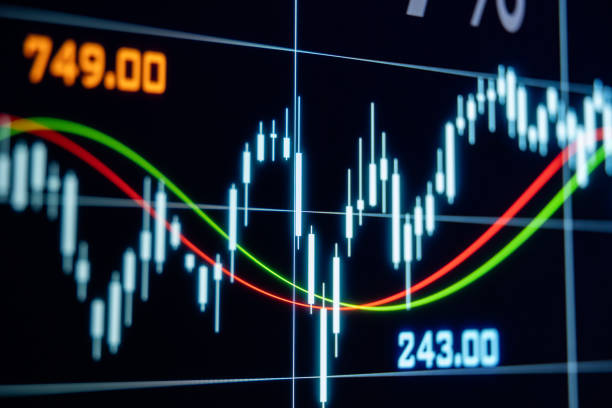December 14, 2018 – Ted Knustson reported in Personal Finance on the December 13, 2018 meeting of the Securities and Exchange Commission (SEC) Investor Advisory Committee meeting that included a discussion with various invited industry representatives regarding disclosures on sustainability and environmental, social and governance (ESG) topics. While ESG investing goes mainstream and the focus shifts from values to shareholder value, it is one of the most difficult portfolio strategies to pull off. The sentiment on the part of industry participants is that the biggest obstacles include a lack of reliable data and the absence of generally agreed standards within a specific industry and the corporate universe along with a hands-off attitude to ESG by the SEC. Janine Guillot, Director of Capital Markets Policy and Outreach at Sustainability Accounting Standards Board (SASB) asserted that ESG corporate performance metrics are in their infancy compared to financial statements and there is a need for a widespread common language for investors and companies in ESG like there is for financials. At the same time, SEC Chairman Jay Clayton said that the Commission should not require public companies to follow SASB and other third-party standards on ESG. We agree that a common framework to harmonize the language for investors and companies and to establish standards is definitely required. In the event that the SEC is not prepared to lead an initiative to establish these, then the financial industry should take up the charge before investors, in particular, become disenchanted and turn away from sustainable investing. Refer also to December 10, 2018 article.
December 10, 2018 – A Quartz article “Too Good to be True” by Eshe Nelson reports that sustainable investing is booming and that the industry has spawned its own alphabet soup of terms like ESG, SASB, SRI and GRI that are “dedicated to describing this seemingly moral turn in the finance industry, where money is invested in ways that make the world a better place.” The article supports the growth view by citing recently published USSIF data and also a recent HSBC survey of more than 1,700 investors and issuers around the world which showed that 60% of investors and just under half of issuers have an ESG strategy. The proportion for both rises to more than 80% in Europe. Asset managers around the world speak eagerly about a wave of millennial investors ready to pour their money into sustainable investments. And this isn’t just virtue signaling: More people now accept the conclusions of academic studies that say socially responsible investing doesn’t sacrifice financial returns.
The article goes on to suggest that this could be too good to be true and that is because the world of sustainable and socially responsible finance lacks structure and standards. Without these, there’s little to protect against “greenwashing”—firms and fund managers saying they are adhering to ESG principles without following through on them. There are no firm definitions of what counts as ESG investing, which allows many to make it so expansive that it becomes nearly meaningless. The article closes by noting that the European Union (EU) is trying to combat this and that the industry needs a gatekeeper. Refer to December 14, 2018 article.
December 10, 2018 – In “Performance Penalty for Responsible Investing is ‘Unequivocally’ a Myth: Mercer” that was published in Think Advisor, the article captured remarks made by Alex Bernhard who participated along with Bloomberg’s sustainable finance editor Emily Chasan in a discussion session held at the Global Responsible Investing Forum in New York. Alex Bernhardt, who leads Mercer’s Responsible Investment Team in the U.S., explained that the performance penalty attached to responsible investing for years is absolutely and unequivocally a myth. According to Bernhardt, each of the approaches to responsible investing which he differentiated as socially responsible investing (SRI), ESG investing and impact investing, has a strong research base that shows there is not a performance penalty and there may be a performance premium in some cases. Bernhard went on to note that exclusionary investing does not guarantee a performance penalty but it does introduce tracking error and if investors are concerned about results that deviate from the index, this is not a strategy for them.
To support this view, Chasan shared some 2016 data from Hermes, FactSet and Sustainalytics that shows the effect that eliminating “sin stocks” can have on portfolio performance. According to Bloomberg’s analysis of the data, eliminating certain sin stocks either had a positive effect or showed little difference. Our view is that there are different sustainable investing strategies being employed today. Each of these are subject to their own risks, benefits, and performance implications that are likely influenced by how the strategies may be approached individually and/or in tandem with other sustainable investing strategies and over what market cycle and investment time horizon. Investors need to understand these considerations and decide how these best fit in with their investment objectives.
December 7, 2018 – With the European Commission working to build an “action plan” which will possibly include a “taxonomy” that defines “what is environmentally sustainable,” some are asking “What next for ESG…” Neil Johnson does exactly that in a recent CityWire Selector article. It is expected that a standard ESG taxonomy may lessen the practice of naming individual companies and funds “green” when they are not, and increase the availability of “meaningful and reliable data” to evaluate climate risk. Regulatory actions could also make it “compulsory” and build a standard for comparison among companies. We believe that some form of guidance related to disclosure would be helpful, but we think that extending it deeply into portfolio management practices may not be the best strategy.
December 6, 2018 – Kate Allen’s article “Lies, damned lies and ESG rating methodologies” that appeared in ft.com’s Alphaville makes the case put forward in a report by Asian Investment Bank CLSA and the Asian Corporate Governance Association (CLSA/ACGA) that commonly used ESG ratings and rating methodologies reflect an oversimplification that can give rise to inconsistent results from one company to the next. For example, electric automobile manufacturer Tesla is rated last for global auto ESG by FTSE but the same company received the best score from MSCI and a middle of the pack rating by Sustainalytics. Investors need to be clear what the methodology they choose is actually measuring, and why. Otherwise, ESG scoring risks creating a false sense of confidence among investors who don’t really understand what lies behind the numbers—and therefore don’t really understand what they are buying. The article concludes that quality and comparability of ESG data remains hotly contested and caution applies against over-reliance on simple ESG scores. As with any rating or scoring, we believe that investors should understand the underlying rating or scoring methodology and what the outputs are actually measuring. In the end, these ratings or scores will provide varying levels of value and investors should be using these in a way that best suits their investing strategies.
December 4, 2018 – In a report entitled “Environmental Impact and reporting vary by jurisdiction and asset class,” Moody’s Investors Service reports that the green bonds that it has assessed will save about 2.6 million metric tons of annual carbon emissions. The rating agency indicates that it provides Green Bond Assessments (GBAs) on $22 billion of debt securities, with proceeds allocated to green buildings/energy efficiency (52% of total), renewable energy (17%), clean transport (15%), and other categories (16%). Its universe of assessed green bonds predominantly targets reducing greenhouse gas emissions, where we see the most comprehensive and consistent reporting. Moody’s GBA’s are forward-looking opinions of the relative effectiveness of the issuer’s approach for managing, administering, allocating proceeds to and reporting on environmental projects financed by green bonds. GBAs assess the relative likelihood that bond proceeds will be invested to support environmentally beneficial projects as designated by the issuer. GBAs provide a relative assessment of green bonds with the intention of assisting investors in their evaluation of various bond offerings across the universe of Moody’s rated bonds as well as non-Moody’s rated bonds. While impact reporting indicators and their calculations for renewable projects are still challenging to achieve with a high level of accuracy, we believe that this type of reporting, whether by the issuers of green bonds, third-parties such as Moody’s, or fund managers who invest in green bonds, is valued by investors and serves to validate and reinforce the reasons for their investments in sustainable-oriented products in the first place.
December 3, 2018 – It was reported by Vicky Ge Huang of Citywire that UBS Global Wealth Management has developed a rating system to help clients and advisors evaluate in-house and third party funds on the wirehouse’s platform. The rating system would apply to long-only equity funds and bond mutual funds and ETFs. Initially, the rating system will cover all long-only equity and bond mutual funds and ETFs on the firm’s non-US platform as well as approximately 150 funds and separately managed accounts that feature on the US platform’s select list. The rating system is expected to be completely implemented by the end of 2019 and updated depending on necessity afterwards. Funds will be rated between one and 10 based on how they score on seven sustainability criteria. These are: pollution/waste, climate change, water, people, products/services, corporate governance and ethics. The ESG scores will be assigned based on interviews with managers, questionnaires, data analysis and other due diligence processes. According to the firm’s Chief Investment Officer, the methodology differed from the likes of Morningstar’s sustainability ratings. The difference is while those processes tend to be built for scale, the UBS processes are really bespoke and it’s built for detail and granularity. According to Andrew Lee, head of Americas sustainable and impact investing at UBS Global Wealth Management, as the universe of sustainable investing strategies labeled as such continue to expand rapidly, it’s really important that we have a consistent approach to being able to describe what are the differences regardless of how these strategies are labeled or marketed. This approach to help UBS clients and investors makes sense to us, given material variations in approaches to sustainable investing on the part of funds and ETFs. This should serve to standardize the different sustainable investing approaches and anchor investor expectations.
November 30, 2018 – A survey of 500 global CIOs, PMs and supply-side analysts by Edelman Trust found that 89% “have changed their voting and/or engagement policy to be more attentive to ESG practices”. Among the factors of greatest concern are company’s corporate culture. The study finds that 94% of investors feel they must “trust a company’s board before making or recommending an investment.” We believe that while these finding related to asset managers investing in a company’s securities, the implications for their companies and their reputations generally, are clear. “Trustworthy-ness” has always been important when managing client’s investments, but is increasingly critical and “multi-dimensional” for asset managers today.






